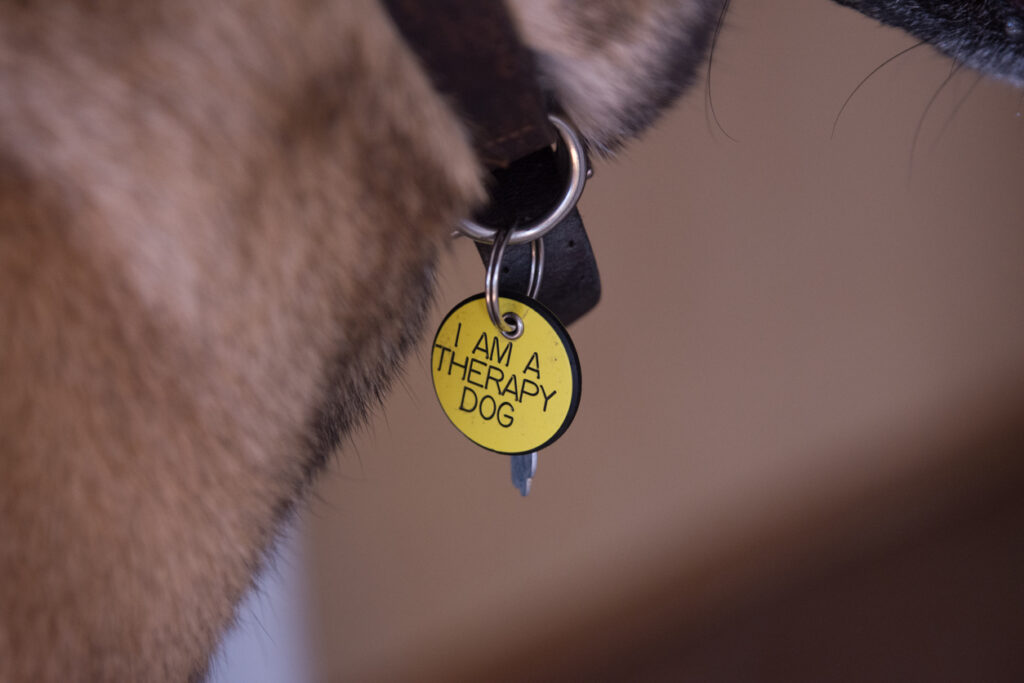The process of getting your pet approved as an Emotional Support Animal (ESA) can seem overwhelming, but it’s worth the effort to ensure your furry companion can legally support your mental health needs. Here are 14 steps to help guide you through the journey of securing ESA approval for your pet.
1. Understand What an Emotional Support Animal Is

iStock
An ESA provides comfort and emotional support to individuals with mental health challenges. Unlike service animals, ESAs don’t require specialized training. However, they’re still protected under certain laws, such as the Fair Housing Act. Before starting the process, make sure your pet is suited for this role. Consider their temperament and behavior—a calm, affectionate, and well-behaved pet is ideal for emotional support. Additionally, understanding the distinction between ESAs, service animals, and therapy animals is crucial. Service animals receive extensive training to perform specific tasks, while therapy animals provide comfort to multiple people in settings like hospitals. Knowing where your pet fits will help you navigate the requirements effectively.
2. Evaluate Your Mental Health Needs

FMT
Take a moment to reflect on why you need an ESA. Emotional support animals are meant to assist individuals with mental health challenges such as anxiety, depression, PTSD, or phobias. Think about how your pet currently helps you manage these conditions. For example, does their presence reduce your anxiety during stressful situations or provide comfort when you’re feeling low? Having a clear understanding of your needs will not only help you explain your situation to a licensed mental health professional but also confirm that an ESA is the right choice for you. This clarity is a vital first step in the process.
3. Consult a Licensed Mental Health Professional

Pexels
Schedule an appointment with a licensed therapist, counselor, psychiatrist, or psychologist. Explain your mental health challenges and how your pet provides emotional support. Be specific—share examples of how your pet helps you cope, whether it’s through reducing anxiety or offering companionship during depressive episodes. A licensed professional will evaluate your situation and determine if an ESA is appropriate for your treatment plan. Their professional evaluation is a crucial step in the approval process, and their endorsement in the form of an ESA letter is necessary to move forward. Be prepared to answer any questions they may have about your pet’s role in your life.
4. Obtain an ESA Letter

Pexels
The ESA letter is an official document written by a licensed mental health professional. It confirms that you have a mental health condition and that your pet is a crucial part of your treatment plan. The letter must include the professional’s license number, contact information, and a detailed explanation of why you need an ESA. This letter serves as proof of your pet’s status and is required for housing accommodations or traveling with your ESA. Keep in mind that the letter is typically valid for one year, so you may need to renew it annually to ensure its continued validity.
5. Research ESA Laws and Protections

iStock
Before moving forward, familiarize yourself with the laws and protections for ESAs. The Fair Housing Act protects individuals with ESAs from housing discrimination, allowing pets in no-pet apartments or rental units. However, ESAs no longer have the same travel protections under the Air Carrier Access Act as they did in the past. Some airlines may still allow ESAs, but policies vary. Knowing your rights and limitations will help you advocate for your ESA in various situations. Understanding the differences in laws for housing versus travel will also prepare you to navigate these areas confidently.
6. Assess Your Pet’s Behavior and Training

Pexels
While ESAs aren’t required to have specific training, your pet must be well-behaved in public and non-aggressive. If your pet struggles with behavior issues, consider working with a professional trainer to address these concerns. For instance, if your dog tends to bark excessively or your cat becomes easily stressed, these behaviors could create challenges in housing or travel situations. A calm and friendly demeanor is essential for an ESA, especially when interacting with landlords or others. Demonstrating that your pet is under control and poses no threat will help ensure a smoother process for everyone involved.
7. Register Your ESA (Optional)

iStock
Although registering your ESA isn’t legally required, some individuals choose to do so for convenience. Registration can provide you with a certificate, ID card, or vest that identifies your pet as an ESA. While these items are not legally binding, they can help reduce misunderstandings and make it easier to communicate your pet’s role. For example, an ESA vest can signal to others that your pet is more than just a regular companion animal. However, it’s important to remember that the ESA letter from a licensed mental health professional is the only document that carries legal weight.
8. Prepare Documentation for Housing Accommodations

Pexels
If you’re planning to live in housing that has pet restrictions, you’ll need to provide your ESA letter to your landlord. Be proactive by gathering all necessary documents and presenting them professionally. Landlords are required by law to make reasonable accommodations for ESAs under the Fair Housing Act. However, they may request verification of your pet’s status, so having your paperwork organized and ready will make the process smoother. If your landlord has concerns, be prepared to address them calmly and provide any additional information they might need.
9. Understand Travel Policies for ESAs

Flickr
Travel policies for ESAs have changed in recent years. Airlines are no longer required to accommodate ESAs, but some still allow them on a case-by-case basis. Check the airline’s specific policies well in advance of your trip and be prepared to provide your ESA letter if needed. Consider alternative options, such as flying your pet as a regular passenger or exploring other forms of transportation where your ESA can accompany you comfortably. Planning ahead will help you avoid last-minute stress and ensure that your ESA’s needs are met during travel.
10. Keep Your ESA Letter Updated

Pexels
ESA letters typically need to be renewed annually to remain valid. Make sure to schedule follow-up appointments with your licensed mental health professional to maintain your ESA’s status. Regular updates ensure that your documentation stays current and reflects your ongoing mental health needs. An up-to-date letter will prevent complications with landlords or other parties requiring proof of your ESA. Staying proactive about renewals will save you time and avoid potential disruptions to your housing or travel arrangements.
11. Communicate Clearly with Landlords or Property Managers

Freerange Stock
When discussing your ESA with landlords or property managers, be respectful and provide your documentation upfront. Clearly explain the importance of your ESA for your mental health and be prepared to answer any questions they may have. For example, you might share how your ESA helps reduce anxiety or provides comfort during challenging times. While the Fair Housing Act protects your rights, maintaining a positive and cooperative attitude can help resolve any concerns. Open communication is key to ensuring a smooth process and avoiding potential misunderstandings.
12. Plan for Veterinary Care

iStock
Ensure your pet is healthy and up-to-date on vaccinations. Landlords and property managers may request proof of your pet’s vaccinations or health records, so having these documents ready is essential. Regular veterinary check-ups not only keep your ESA in good health but also demonstrate your responsibility as a pet owner. A healthy pet is better equipped to provide the emotional support you need and ensures a positive experience for everyone involved. Consider creating a care plan that includes preventive treatments and emergency contacts for added peace of mind.
13. Be Prepared for Potential Pushback

PickPik
Despite the legal protections for ESAs, you may encounter resistance from landlords, airlines, or others. Be prepared to calmly and confidently advocate for your rights. Having a thorough understanding of ESA laws and maintaining all necessary documentation will help you address any challenges. For instance, if a landlord questions your ESA’s validity, you can provide your ESA letter and explain your mental health needs. While you have legal protections, staying polite and professional can go a long way in resolving disputes and ensuring your ESA is accommodated.
14. Celebrate Your ESA’s Role in Your Life

PickPik
Once your pet is approved as an ESA, take a moment to appreciate the incredible bond you share. Your furry companion plays a vital role in supporting your mental health and well-being. Recognizing their contribution can deepen your connection and remind you of the value they bring to your life. Celebrate the journey you’ve taken together by creating new routines or special activities that honor their role. Whether it’s through extra playtime, a favorite treat, or simply more cuddle sessions, showing appreciation for your ESA will strengthen your relationship.
With these 14 steps, you’ll be well on your way to securing ESA approval for your pet. By following the process carefully and advocating for your needs, you can ensure your beloved companion is recognized for the crucial role they play in your mental health journey.


